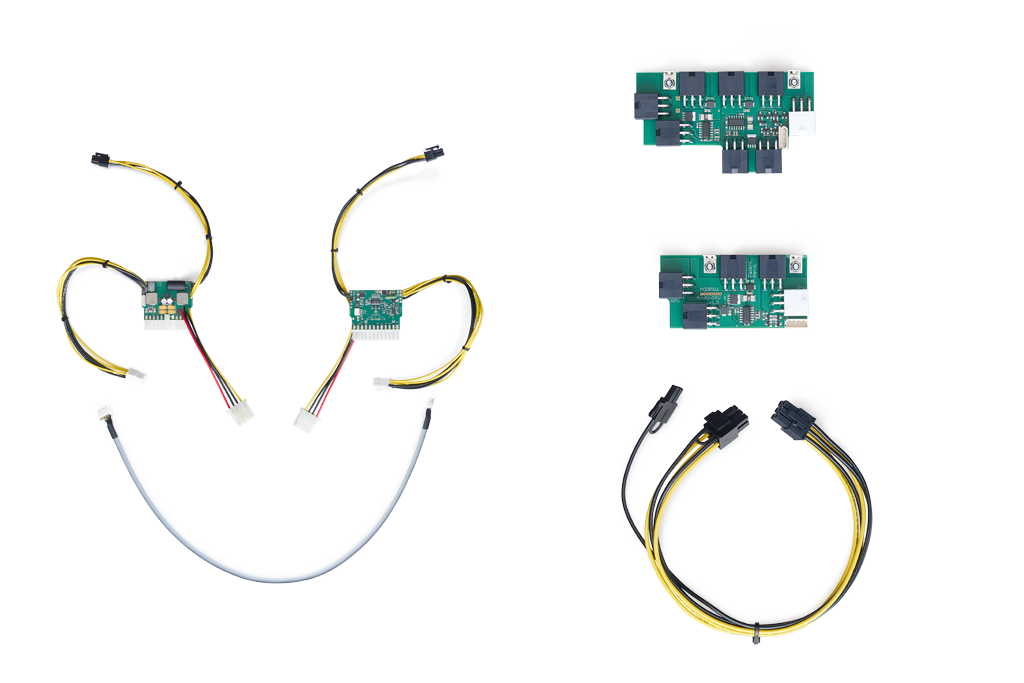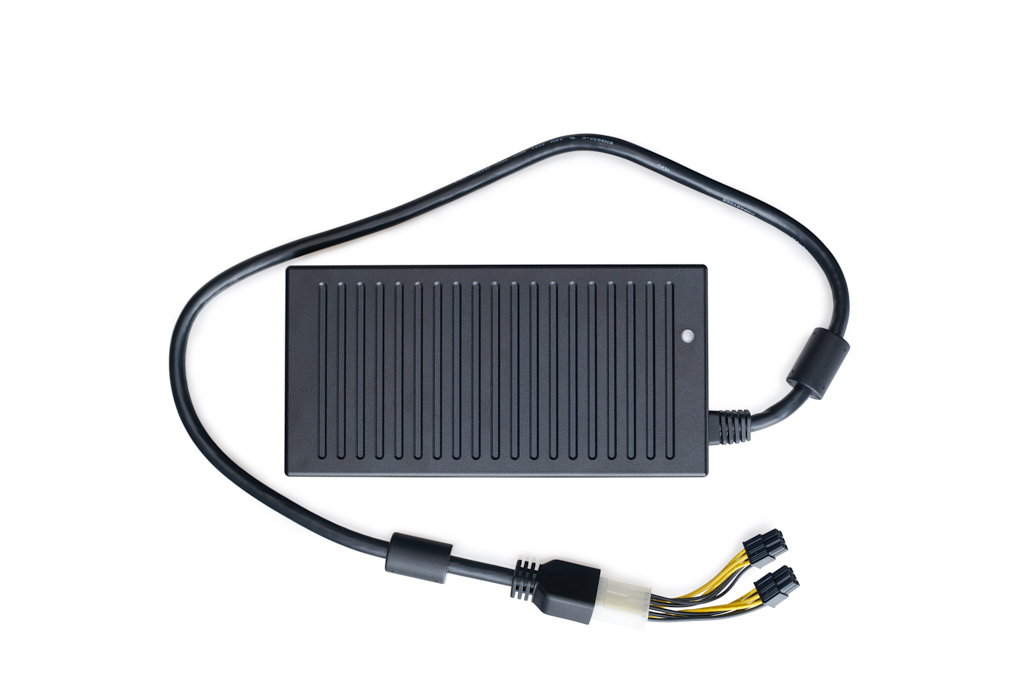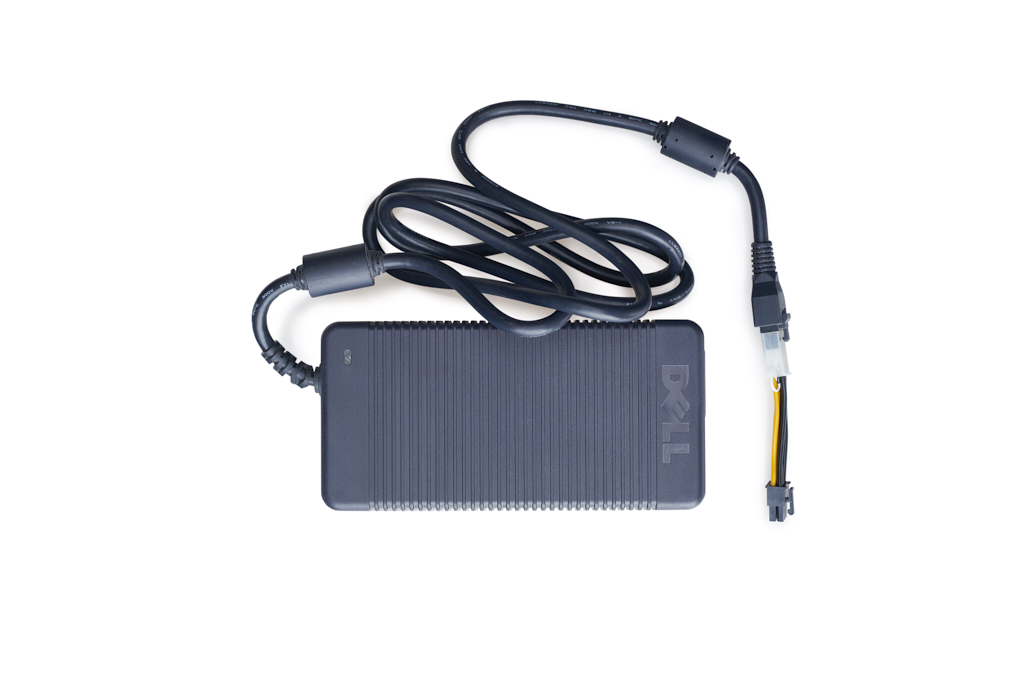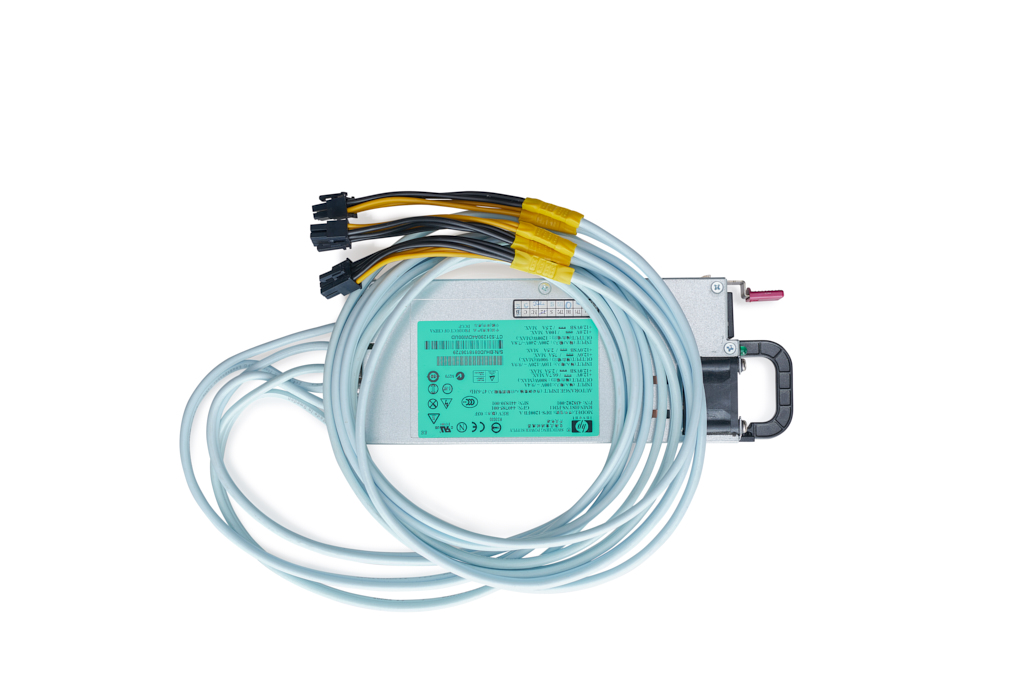MODPSU – How does it Work?
At the centre is a MODPSU beefed-up DC/DC-switching power supply (DC_PSU_M). It can by itself handle much higher current than legacy competing products (DC_PSU_L).
The DC_PSU_M can be used stand-alone for slowly-changing heavy loads such as 6-drive file servers. However, today’s high performance graphics adapters are not only power-hungry. They keep average power losses down by very actively changing operating frequency and turning sub-systems on and off. This quick changing back and forth between very high and very low power consumption makes the graphics adapter a very bad next-door neighbour. If you connect it directly to a DC_PSU, it will hog the buffered energy stored in the DC_PSU, in effect causing short power outages inside the power supply.
By adding one (or more) AddOn board/s and feeding DC_PSU_M and graphics adapter/s from separate DC power paths, parasitic starvation is avoided. The combination of a DC_PSU_M and AddOn board/s is what really makes MODPSU a modular power supply, and a very expandable one at that.
This is only part of the story. A proper PC power supply must also adhere to all core requirements of the ATX specification:
- Facilitate synchronized turn-on and turn-off of all parts of the computer system
- Meet rise-time and rise-order requirements for the rails
- Monitor the quality of the power delivered on every rail
- Provide emergency shutdown of the entire system in case of a failure condition
- Provide power to either all rails or no rails (except for the 5 V stand-by)
Power supply daisy-chaining used e.g. in some cryptocurrency mining rigs by which a down-stream PSU is turned on by the up-stream one doesn’t meet these requirements very well. Most importantly, a down-stream PSU cannot tell the up-stream ones to do emergency shutdown in case of a failure. It is perhaps less of a problem until something breaks, but the risk of damage to the rest of the pretty darned expensive system is much greater.
With MODPSU, the interconnection cable from DC_PSU_M to all AddOn boards carries ENABLE and POWER_OK signals, through which the AddOn board soft-start switches are controlled to turn power on or off. This power delivery system also prohibits start-up if not all power inputs are energized and stops all power delivery if a power input is lost (e.g. if a power cable is disconnected during operation).




